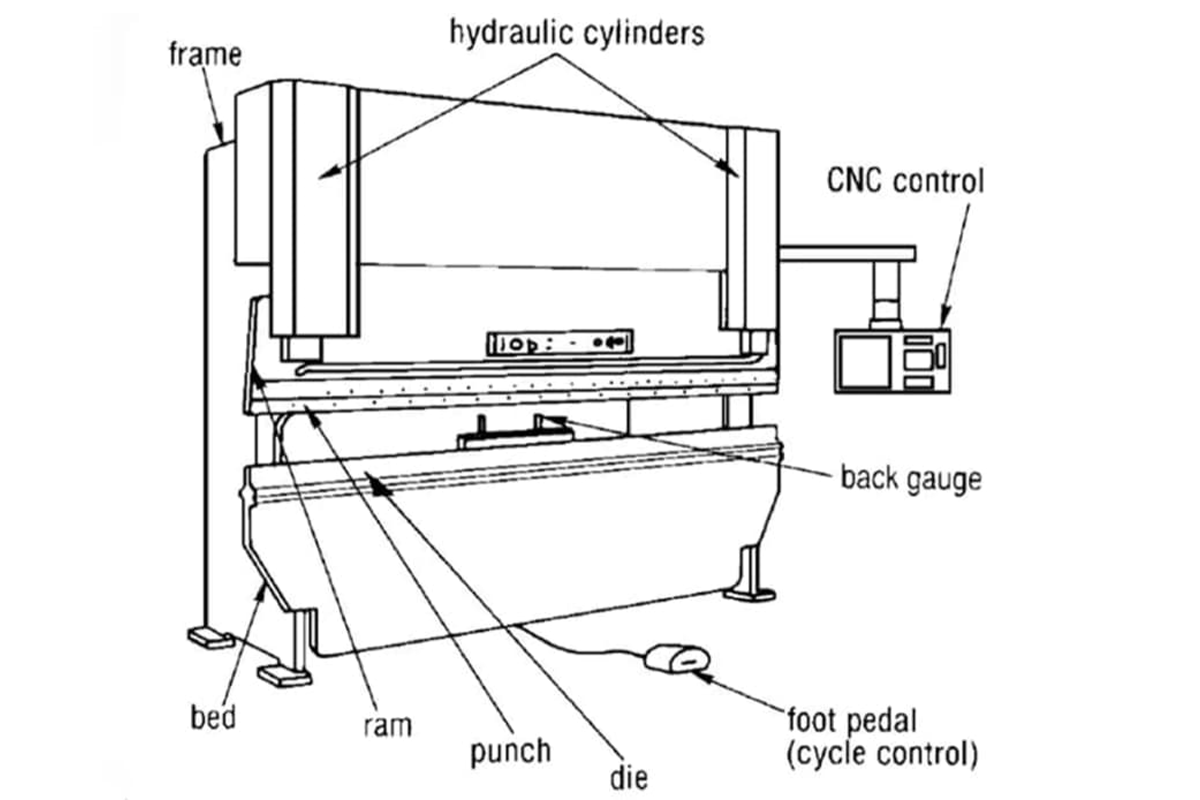Press Brake Hydraulic Reservoir: Function, Design, and Competitive Advantage

The hydraulic reservoir, also known as the oil tank, plays a vital role in the overall operation of a press brake machine. Although it is a passive component in the hydraulic system, it is essential for ensuring the stability, performance, and longevity of the entire system. For press brake parts suppliers and manufacturers, offering a high-quality reservoir is an important step in delivering efficient and reliable hydraulic solutions to customers.
1. Function of the Hydraulic Reservoir
The main functions of the hydraulic reservoir in a press brake include:
Oil Storage: Holds sufficient hydraulic oil to supply the system during operation.
Heat Dissipation: Acts as a heat sink to help dissipate the heat generated by the hydraulic system.
De-aeration: Allows entrained air in the hydraulic fluid to escape, preventing cavitation and inconsistent movement.
Water Separation: Encourages the separation and settling of water or contaminants at the bottom of the tank.
Contaminant Settlement: Helps dirt and particulates settle out of the fluid before recirculation.
Fluid Expansion Buffer: Accommodates thermal expansion of the hydraulic fluid.
Mounting Platform: Often serves as the base for mounting hydraulic pumps, filters, and return lines.
2. Design Characteristics
A well-designed hydraulic reservoir should meet the following criteria:
Proper Sizing: Typically, the tank should hold 2 to 4 times the system flow rate per minute to allow for effective cooling and de-aeration.
Baffle Design: Internal baffles help to direct oil flow and promote separation of air and contaminants.
Return Line Placement: Returns should be below the oil level to reduce foaming and turbulence.
Access and Maintenance: Should include a clean-out cover, oil level gauge, thermometer, and breather cap.
Anti-corrosion Coating: Internal surfaces may be coated or treated to prevent corrosion and extend life.
3. Material Selection
Hydraulic reservoirs are typically made from the following materials:
Mild Steel: Most common material for its strength, ease of fabrication, and cost-effectiveness.
Stainless Steel: Used for high-hygiene or corrosion-sensitive environments.
Aluminum: Lightweight alternative, used in smaller or mobile hydraulic systems.
Cast Iron (Rare): Extremely durable but heavy and expensive.
All our tanks are pressure-tested, leak-proof, and coated for durability and long-term operation.
4. Technical Advantages of Our Hydraulic Reservoirs
Our reservoirs for press brake machines offer the following features:
✅ Optimized Baffle Design: Increases de-aeration efficiency and fluid stability.
✅ Low Noise Operation: Damped construction reduces vibration and noise from pumps.
✅ High Heat Dissipation Capacity: Supports consistent hydraulic performance, especially during long operation cycles.
✅ Integrated Mounting Brackets: Easy installation and secure fit with common hydraulic systems.
✅ Built-in Return Filter System: Minimizes contamination and extends oil and pump life.
5. Our Company’s Competitive Advantage
As a specialist supplier of press brake components, our hydraulic reservoirs stand out for several reasons:
✔️ Customizable Sizes and Inlets/Outlets: Designed to fit different press brake brands and capacities.
✔️ ISO and CE Certified Products: Guaranteed quality for international markets.
✔️ Durable Surface Coating: Anti-rust primer and powder-coated finish for extended service life.
✔️ On-Time Delivery and Support: We maintain sufficient stock and provide global logistics services.
✔️ Technical Consultation Available: We support our partners with CAD models, mounting guidance, and after-sales services.





